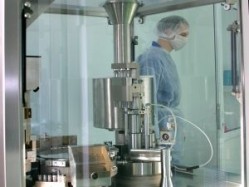Plant Design Critical in Sterile Manufacturing, Expert Says

Ex-Director of European External Supply Quality at GlaxoSmithKline, Peter Murray, told delegates at the Global Pharmaceutical Contract Manufacturing (GPCM) conference in London, UK last month that increased regulatory expectations mean keeping up with plant design innovations is critical for sterile drugmakers seeking to avoid contamination problems.
He said: “If the plant is poorly designed, and laid out, you will be continually fighting against yourself and regulators.”
Contamination is mostly attributed to particulates coming from workers in the plant, Murray said, and thus was reflected in WHO’s 2011 sterility GMP guidance: “As far as possible, personnel should be excluded from Grade A zones.”
On top of this, he continued, safety issues can also arise from the problems with workflow, and training and understanding amongst operators. “The best modern plants have got design that actively assists the achievement of sterility” whereas “at the other end the operators have to be working really hard to achieve anything remotely close to acceptable.”
“If you are a manufacturer you need to look at what you’ve got assess and as appropriate relocate or upgrade, before you are doing it under a regulatory sanction under a timetable that you do not control.”
Furthermore in some cases Murray recommended knocking down a facility and rebuilding it, rather than trying to rectify the issues, as a cheaper, more viable option. “You can’t make a silk purse out of a pig’s ear” he said, and “with some plants you are in that situation.”
Citing his time at GSK, Murray estimated that of the plants – both GSK’s own and those of third-party manufacturers - his team assessed, 10% needed no action, 60% required some procedural, retraining or optimisation of workflow action, and 30% had major issues where severe financial remediation was necessary.
Fatal Consequences & Regulatory Vigilance
Murray told the delegates: “If you get this wrong, people die – [as was the case with 5 patients following a fungal contamination at the New England Compounding Center last year] - or are adversely affected which is why the regulators rightly are interested in good standards.”
Though these deaths represent the extreme, contamination in sterile products has led to warning letters, production shutdowns and consent decrees for a number of manufacturers, including Boehringer Ingelheim’s subsidiary Ben Venue, who in the last few years has been on a downward spiral stemming from GMP violations.
An inspection by the US Food and Drug Administration at the facility in Bedford, Ohio found - amongst a number of hygiene and bad practice issues - foreign particles in sterile products.
However, Murray warned drugmakers that increased regulatory vigilance would affect even the most advanced facilities as they could be capable of producing poor product if operated incorrectly. “Everyone needs to adapt as the regulators get tougher.”
















